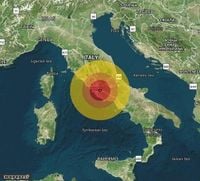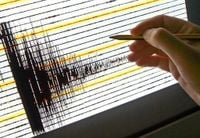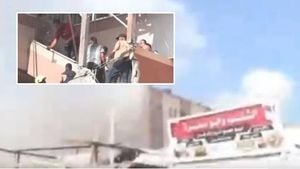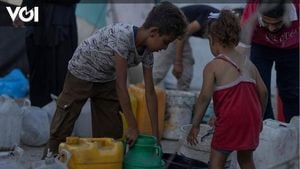At 3:42 AM on May 8, 2025, a magnitude 2.9 earthquake rattled the southeast province of Rome, with its epicenter located in Colle Fuori, between the towns of Rocca Priora and San Cesareo. The earthquake, recorded at a depth of 10 kilometers, was felt by many residents across various towns, including Frascati, Grottaferrata, Marino, Ciampino, Albano Laziale, Velletri, Montecompatri, and Monte Porzio Catone. Fortunately, there were no reports of damage to buildings or injuries among the population.
This seismic event is part of a broader pattern of tectonic activity in the region, which is not new to the area known as the Castelli Romani. According to Fabio Taddei, a geologist and former city councilor of Velletri, the seismicity in the Castelli Romani is attributed to fault movements caused by the ancient activity of the Vulcano Laziale, which dates back between 730,000 to 30,000 years ago. Taddei noted that while the volcano is not currently active, it cannot be considered completely dormant or stable from a geological standpoint.
“The earthquakes registered in this area should not be interpreted as signs of the volcano awakening,” Taddei explained. “They are instead the result of tectonic movements affecting the entire Italian Peninsula, particularly the central Apennines.” Italy is situated at the intersection of several tectonic plates, including the African and European plates, which contribute to the seismic activity across the region.
Historically, the Castelli Romani region has experienced significant earthquakes, although it is not classified as a high-risk seismic area like Calabria or Umbria. Notable past events include a violent earthquake on February 2, 1438, centered in Grottaferrata, which was described as “frightening.” Another significant quake occurred on August 26, 1806, measuring 5.5 on the Richter scale, causing damage and fatalities in Genzano, Rocca di Papa, and Velletri. The most severe earthquake in the region's history took place on December 26, 1927, which was the fourth most violent quake attributed to the Colli Albani volcano, severely impacting towns such as Nemi, Genzano, Lanuvio, Ariccia, Albano Laziale, and Velletri, and even causing damage in Rome.
In recent years, many tremors felt in Rome and the surrounding areas have been linked to seismic activity in neighboring regions, such as Abruzzo and Umbria. The devastating earthquakes in L’Aquila in 2009 and in Amatrice and Accumoli in 2016 serve as reminders of the potential risks associated with seismic events in Italy.
As the region continues to experience tremors, experts emphasize the importance of structural safety and earthquake preparedness. Taddei has repeatedly warned that the real emergency lies in the aging building stock that is not adequately prepared for seismic events. “It’s not the earthquake that kills, but the collapsing buildings,” he stated. “Prevention must focus on restoring historic centers and enforcing anti-seismic regulations.”
While the Castelli Romani may not be among Italy's most dangerous seismic zones, events like the one on May 8 serve as crucial reminders of the need for vigilance and investment in the structural safety of homes and public spaces.
Daniele Cataldi, a researcher with the LTPA Observer Project, has also weighed in on the seismic dynamics of the Vulcano Laziale. He stated that all seismic events are preceded by electromagnetic emissions, which can indicate the area at risk. These emissions are monitored by a system developed by his research group. “The volcano is not extinct but rather quiescent,” Cataldi noted, emphasizing the need for clarity in discussions about seismic prediction. “Every seismic event is preceded by electromagnetic emissions, which we are working to correlate with data from our monitoring stations across the country.”
As discussions about seismic activity and safety continue, the recent earthquake in the Castelli Romani region highlights the ongoing geological complexities of the area and the importance of preparedness in mitigating risks associated with future seismic events.





